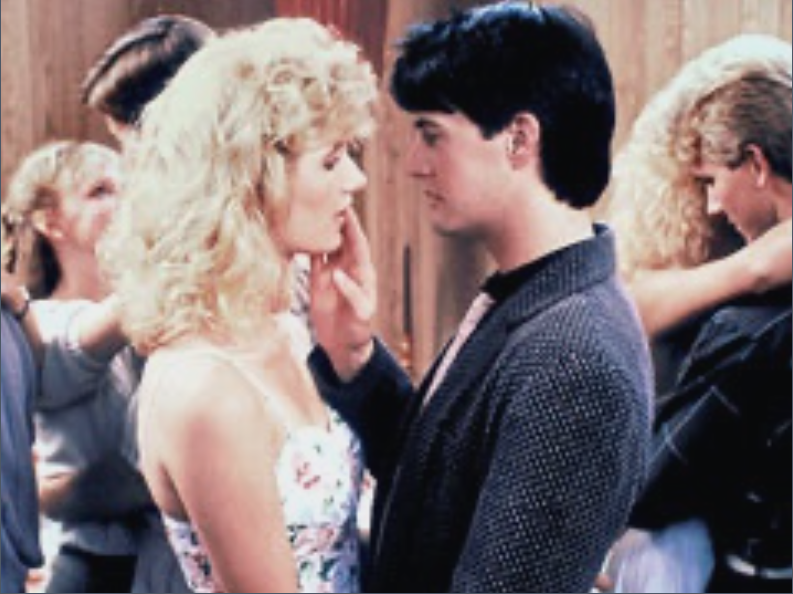
David Lynch’s ‘Inland Empire’ (2006) is three hours and twelve minutes long. The first hour is inspiring, the next frustrating, the third (on a second viewing) tragic and beautiful. Back in March 2007 I wanted, after 90 mins, to run from the cinema but felt I couldn’t because I like Lynch’s work so very much. A few months later I found on two excellent blogs two excellent essays about the film: ‘Something got out from inside the story – Lynch’s Unhome Videos’ in k-punk here and the second, ‘Inland Empire’, in the blog ‘American Stranger‘. (The essay was removed from the latter site some time ago but I am grateful to traxus4420 for kindly sending me a copy. However, on revisiting Strength Weekly for a major refurb after ten years, I found, alas, that the copy had vanished. I’ll keep looking for it).
k-punk observes that the film ‘often seems like a series of dream sequences floating free of any ostensible reality, a dreaming without a dreamer (as all dreams really are) – no frame is secure, all attempts at embedding fail.’ The protracted absence of ‘a dreamer’ may explain why the movie exhausts at a first viewing. Girded for a revisit as a result of receiving illumination from the aforementioned essays, I bought the DVD and determined to go back down those dark, scratchy corridors in order to put myself in the picture.
It’s good that there are people in the world who will synopsise movies with labyrinthine and intractable plots in order that the rest of us may clarify just exactly what it was we just saw. Such exactitude is only notional in this case but a robust public service is delivered by Wikipedia here and provides succour and encouragement for the return match, as does fourfour’s wry frame assembly here, (scroll right down when you get there). which serialises the consternation that envelops each of Laura Dern’s three characters throughout the movie.

The Wiki plot summary is thorough but a further order of compression may prove more workable. Laura Dern’s character, the actress Nikki, is preparing for a role in a new film. The film is not as new as it seems, it’s a remake of an earlier Polish movie whose male and female leads were murdered. The film is cursed. Something gets out from inside the story or, as American Stranger has it, ‘the staged events of the film shoot bleed into the apparently actual events of the actors’ lives…it rapidly becomes uncertain which of the two ‘worlds’ contains the other.’ As a consequence of this osmosis and confusion, Sue – the character in Nikki’s new movie – stumbles into Nikki’s world and Nikki gets lost in the world of the enchanted script. Further down the line, in Hour 2, elements of the original film also draw Nikki in, to the extent that she (or Sue) finds herself, from time to time, in Poland, embroiled in a murder scenario. Hour 3 sees Sue, who has become a hooker, dying from a stab wound among homeless people at Hollywood and Vine. When she is dead, the director of Nikki’s film calls ‘Cut!’ and Nikki gets up. She wanders into a cinema where she sees Sue on screen, acting in the film she has just been working on.
Hour 2 is fairly gruelling insofar as standard physics, geography and history are out the window. But as k-punk remarks ‘…the space involved is ontological, rather than merely physical.’ Hour 2 is not fantasy in any genre sense, nor can it be domesticated with reference to the unfolding of any psychological pathology within the protagonists. If madness is at hand it’s an effect of the shadow of an old, old reality that, some would contend, predates the individual’s acquisition of language. Take away that acquisition and where’s the physics that would keep the geography in the right history?

If Lynch is not toying with the psychic Jurassic then there is another way of categorising the effect he delivers: the films are, of course, ‘dream-like’ and, in this instance, ‘nightmarish’. It seems an obvious thing to say, and the terms are usually scattershot across arts commentary as if they explained something. They usually explain little and constitute a classic passing of the critical buck. Lynch’s ‘Eraserhead’ (1977) was more deserving of the terms insofar as people, objects and events in the scenario could be understood to stand for other less palatable ideas and urges, even if the act of interpretation itself was not a straightforward and convenient translation. The film is often described as Lynch’s ‘most personal’, suggesting that the dreamer himself is close at hand. If this is the case then the film has passed through him and can be passed through him. The absence of the dreamer, the absence of a conventional script, the low ‘strange object’ count (no severed ears, no babies made out of skinned lamb’s heads etc) place ‘Inland Empire’ adjacent to but not in Dreamland. Recalling k-punk’s description of the film as ‘a series of dream sequences floating free of any ostensible reality’ – the possibility arises that these are sequences that are more urgent than the urgently personal, their resemblance to dreams and nightmares is misleading, they are certainly unhome and uncanny but of the waking world.

Whatever – Lynch presents a take on a Place without Time and a Time without Place. Even he, according to reports, resorted to a degree of intuitivised jumblism on IE, starting the shoot without a script and delivering dialogue to the actors on a nightly basis. This is, literally, self-defeating and, no doubt, precisely what was required. It’s not that artistry must be defeated, however, it is applied later, after the contents have surfaced and must then be seized and shaped.
The movie depicts magical processes at work, insofar as ritual acts of concentration and refinement – as practised in rehearsal and discussion – are seen to dilute the barriers between categories of experience to the point where thought and desire actually reshape the world. Anecdote supports this magicality at many stages of the fiction-making process – writers are familiar with the conjuring of versions of their fictions into their everyday lives. Crudely – write a novel about someone breaking their leg and halfway through the first draft you sprain your ankle. (Note to young writers: this only happens now and again.) Not really magic but certainly a product of focused invocation.
A less debilitating aspect of fiction-making is seen in the business of affairs between directors, actresses and actors. There’s nothing like a collectively organised art-form for facilitating alliances and dalliances. Affairs spring up on film sets and in theatres as if there were something in the water. Attractive and usually young humans not only fondle each other in love scenes in a thoroughly professional way you understand but have often been led by their training to believe that the cultivation and maintenance of strong emotions (those which are relevant to the project in hand) outside of rehearsal and performance can only intensify and enhance performance. It’s probably true.
Similarly, given the great sense of responsibility, interdependency and attendant tension felt by directors and actors working on a project, directors and actresses/actors tend to fall in love. It’s a special kinda love, though, and not to be confused – as it often is – with setting up or settling down together.
 We cannot, however, refrain from observing that Laura Dern, having worked on ‘Blue Velvet’ (1986) with Kyle MacLachlan – an actor often seen as Lynch’s on-screen alter ego – subsequently stepped out with him for four years. We should also recall Lynch’s own relationship with BV star Isabella Rossellini and remind ourselves that Rossellini’s father was Roberto and her mother Ingrid Bergman. If physics, geography and history are removed from these genealogies then we may find support for the presence of a pervading psychoanalytical fantasy of generational transfusion wherein intimacy with daughters secures intimacy with their fathers and vice versa.
We cannot, however, refrain from observing that Laura Dern, having worked on ‘Blue Velvet’ (1986) with Kyle MacLachlan – an actor often seen as Lynch’s on-screen alter ego – subsequently stepped out with him for four years. We should also recall Lynch’s own relationship with BV star Isabella Rossellini and remind ourselves that Rossellini’s father was Roberto and her mother Ingrid Bergman. If physics, geography and history are removed from these genealogies then we may find support for the presence of a pervading psychoanalytical fantasy of generational transfusion wherein intimacy with daughters secures intimacy with their fathers and vice versa.
The vice versa, in this case, would secure intimacy for the father with the daughter if the surrogate son were the prime physical agent. Much as film scripts may appear to transmit the genius of their writers, the empassioned claustrophobias of rehearsal give rise to the sexualisation of transmissions that may actually be more concerned with the acquisition of skills.

To attribute magical power to a film script because it contributes to showbiz romances is, however, needlessly whimsical. Notwithstanding the tiresome ‘excitement’ surrounding ‘the Scottish play’ (wherein awful things happen to actors performing ‘Macbeth’) (here, if you must), at the end of the day a bunch of people sit around and concentrate on a sheaf of pages, applying their various skills and sharing developmental aspirations. A reality is suggested then consolidated. The resemblance to magic is structural only.
Seen in these workaday terms, the phenomenon of ‘fiction leakage’ seems rather ordinary and predictable. In the case of ‘Inland Empire’, though, there wasn’t a script, despite the film being about scripts, and the pages came, one learns, in small instalments. Nor was there ‘character development’, that staple of the respectable fiction. In IE it’s location, location, location.
 Laura Dern’s characters have a hard time whoever they are and wherever they are. This is because the geography is so fucked up. Dern herself is widely reported as not having a clue why she was where she was, in the course of the filming.
Laura Dern’s characters have a hard time whoever they are and wherever they are. This is because the geography is so fucked up. Dern herself is widely reported as not having a clue why she was where she was, in the course of the filming.
The spaces which constantly spook her are more than enough to be getting on with; character development is superfluous in these flared-out, migrained video hallways.
A reductive reading – not necessarily a bad thing – would see the spooking spaces as mental states inhabited by one person with three aspects (Nikki, Sue, the hooker). A slightly more expansive reading would posit a realm in which narcissism and restricted capacities for empathy enable the subject to experience others merely as elements of herself. These are psychologically wholesome readings insofar as they aspire to produce psychological wholes from psychological holes. They are conservative, however, and feel a bit old hat. Lynch has been there and done that (‘Lost Highway’ (1997) and ‘Mulholland Drive’ (2001)).
Anyway, things have moved on since the days of character development – the physics has changed. The artistry purportedly implicit in the gradual unfolding of character has been replaced by speedy teleportation. In LH and MD the shifts are shocking but they merely bisect the films. In IE shifts occur every few minutes.
IE is uncanny because the uncanny is premised on the familiar. What, then, is it that we recognise in all this punishing, protracted discontinuity? Dern’s characters struggle to escape places in which everything is in between, nothing is homely, nowhere is anywhere for very long, all is fiction and fictions contaminate all that they touch, including other fictions. If dependable identity is one such fiction then one of its functions is to innoculate the badge holder against less reliable badges. If you lose your immunity then other fictions become interchangeable, they have more in common than they have distinctions. If you lose your immunity you are both locked out and engulfed. You can’t get back home, even though there are doors and corridors that lead there. Immuno-deficient, you are entranced by anything that pops up and defenceless as it spits you out.
American Stranger says “Perhaps this is Lynch’s vision of how our world must end – ‘our world’ as a hyperreal, self-absorbed Inland Empire where everything is merely an advertisement in empty performance for everything else, an ultrasaturated luxury market poised for collapse into its outside.” A world of strident, heeby-jeeby micro-worlds choc-a-bloc with seductors and bullies, sugar highs and grinding lows, the cold sweat of homelessness and undomain.

As she dies in the street, ‘the hooker’ is told a story by another vagrant street girl. The girl tells the hooker about her friend whose vagina wall has a hole torn in it that leads to her intestine. System walls are breached. The systems work well when properly separated but once breached: contamination, fever, the long walks of the undead, ever between stations.


